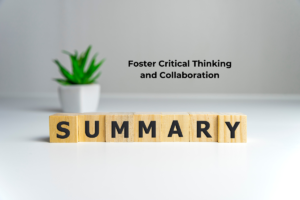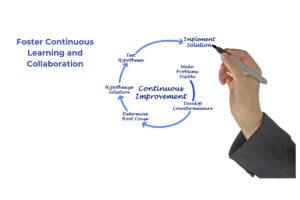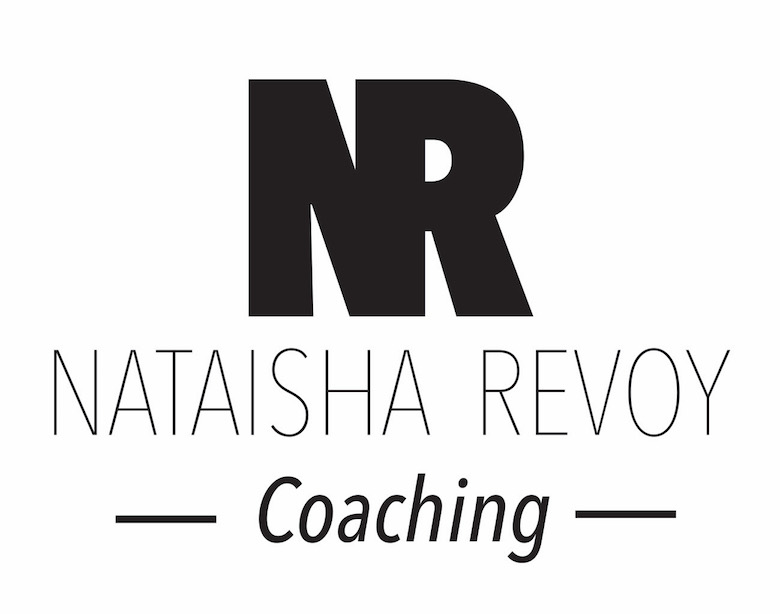“Is It My Job as a Leader to Tell People When They Are Wrong?”
This question frequently arises among the leaders I coach.
On the surface, the intention is good—they want to ensure we’re doing the right things, mitigating risks, and achieving optimal outcomes. But is this the whole picture?
What’s Missing?
A lot, actually! When you consider it, this leader is making a judgment call based on their own perspective and the information they have at hand. Their viewpoint is shaped by their past experiences, leading to automatic, rather than deep thinking.
One Perspective Only
In our fast-paced world, we often make decisions quickly.
Research by Daniel Kahneman, a Nobel Prize-winning psychologist, highlights the difference between System 1 (automatic) and System 2 (deliberate) thinking. System 1 is fast and relies on heuristics and past experiences, whereas System 2 is slower, more deliberate, and analytical.
Leaders who rely solely on their automatic thinking may miss critical insights that could be gained through a more reflective and inclusive approach.

The Automatic Thinking Trap
When navigating the world, we often operate on autopilot to make life manageable.
This extends to our interpretations of people and situations, as our brains use past experiences to make quick decisions at an unconscious level. However, as leaders, we benefit from slowing down and recognizing that our thoughts are often assumptions or interpretations influenced by our past.
So, what’s the alternative?
How do we ensure we have the complete picture, making sound decisions and building the expertise and trust within our team?
7 Ways to support Critical Thinking, Collaboration and Optimal Decision Making

1. The Power of Multiple Perspectives
Understanding that your perspective is just one among many is a crucial step.
Imagine a scenario where a leader is convinced that a specific process needs changing because it hasn’t delivered the expected results. From their viewpoint, it’s straightforward: change the process to fix the problem.
However, by involving team members who are directly engaged with the process, new insights might emerge. Perhaps the issue lies not with the process itself but with how it is implemented or understood by the team.
Successful teams thrive on diverse perspectives. When leaders encourage multiple viewpoints, they are not only fostering a more inclusive environment but also enabling better decision-making.
|
Try it: Ask yourself:
|

2. Cultivate Trust through Collaboration
Engaging in conversations with a mindset of learning and gaining new perspectives helps cultivate trust and optimize outcomes through collaboration.
This approach not only supports trust but also fosters understanding and buy-in from everyone involved.
Psychological safety is a key factor in building successful teams. When team members feel safe to express their ideas and concerns without fear of being judged, they are more likely to contribute fully and innovatively.
This underscores the importance of creating an environment where feedback and ideas flow freely, and where people feel valued for their input.
|
Try it: Ask yourself:
|

3. Recognize and Mitigate Bias
Bias is an inevitable part of human cognition.
Our brains are wired to make quick judgments and decisions based on past experiences, which can lead to biased thinking.
Leaders must be aware of this tendency and actively work to mitigate it.
For instance, confirmation bias can lead us to seek out information that supports our existing beliefs and ignore information that contradicts them.
To counteract bias, leaders can implement structured decision-making processes that encourage diverse viewpoints.
This might include setting up regular team check-ins where everyone is encouraged to share their thoughts or creating anonymous feedback mechanisms to ensure that even the most introverted team members feel heard.
|
Try it: Ask yourself
If you would like to learn other strategies you can use with your team to recognize and mitigate bias, Schedule a no obligation call with me to discuss. |

4. Engaging in Critical Thinking
To ensure comprehensive decision-making, we need to engage in critical thinking—our System 2 thinking—and include others in the process. By doing so, we place ourselves in a better position to accurately assess situations.
Critical thinking involves analyzing information objectively and evaluating it from different angles before reaching a conclusion.
It requires questioning assumptions, seeking out new information, and being open to changing your mind.
As leaders, fostering a culture of critical thinking within your team can lead to more innovative and effective solutions.
|
Try it: Ask yourself
|

5. Communicating Feedback Effectively
After careful consideration and collaborative dialogue, we may conclude that an approach is not supportive of success.
How do we communicate this feedback?
Telling people they are wrong often leads to resistance.
Instead, inviting individuals to discover insights themselves empowers them to understand and adopt more optimal approaches. This not only strengthens trust but also makes people feel valued and capable.
|
Try it: Instead of saying, “That approach isn’t going to work, you need to—–,” ask, As we work towards achieving the end result of ________
During this collaborative dialogue you can share your thoughts and together you both can discover strategies that address the challenges. This can be done with an individual or with a team! If you would like to increase your confidence as a leader in facilitating these types of conversations so that you increase success while creating a feeling of safety and support within your team, Schedule a no obligation call with me and let’s create a plan that uplevel your leadership approach! |

6. Reflecting on What’s Missing
Regardless of whether an approach is right or wrong, discussing it uncovers insights into misunderstandings, miscommunication, and gaps in knowledge or training. By taking the time to identify and address these gaps, we can provide the necessary support or changes to truly optimize outcomes.
7. Continuous Improvement and Learning
Reflecting on what’s missing is not a one-time task but an ongoing process.
Leaders should regularly engage in self-reflection and encourage their teams to do the same. This involves being open to feedback, seeking out learning opportunities, and continually striving to improve both individually and as a team.
One way to institutionalize this is through after-action reviews, a practice used extensively by the military and increasingly adopted by businesses.
|
Try it: After a project or major event, the team comes together to discuss
This process not only helps to identify gaps but also fosters a culture of continuous learning and improvement. |

Summary: Practical Steps to Foster Critical Thinking and Embrace Collaboration
- Encourage Open Dialogue: Create an environment where team members feel comfortable sharing their ideas and challenging the status quo.
- Ask Open-Ended Questions: Instead of asking yes/no questions, ask questions that require deeper thinking and elaboration.
- Promote Reflective Thinking: After making a decision, take time to reflect on the process. What worked well? What could have been done differently?
- Diversify Your Sources: Seek out information and perspectives from a variety of sources.

Conclusion
As leaders, our role is not just to correct mistakes but to foster an environment where continuous learning and improvement are possible.
By shifting from a judgmental stance to one of curiosity and collaboration, we can better navigate complexities, enhance relationships, and drive success within our teams.
Join the Conversation
What are your thoughts on how leaders should approach giving feedback?
Have you found any effective strategies for fostering a culture of trust and collaboration?
Share your experiences in the comments below!
References:
- Kahneman, D. (2011). Thinking, Fast and Slow. Farrar, Straus and Giroux.

